
Crazy How Nature Do That...
The Red Planet.
Been a while since I uploaded to this project, but with the recent landing of Perseverance on Mars I thought this was a good a time as any to post something new. It’s not like any of us can pop over to Mars to have a look, but I’ve actually done some academic work related to Mars and have been around people who have studied our sister planet quite in-depth, so I thought I’d share some things that might help people come up with some nice sci-fi settings.
 The Red Planet...that is actually sort of brown-ish. The massive scar you can see here is an ancient canyon called Valles Marineris that shows signs of once carrying water across the surface.
The Red Planet...that is actually sort of brown-ish. The massive scar you can see here is an ancient canyon called Valles Marineris that shows signs of once carrying water across the surface.That’s right, Mars once had water! Technically it still does, but it’s buried ice, mainly. Seems a bit weird to have buried ice, but Mars actually has a much thinner atmosphere than Earth, so so any ice exposed on the surface sublimates to water vapour. Basically it goes from solid to gas without passing through the liquid stage. It’s all because of pressure, but that thinner atmosphere does something else important for anyone trying to ‘imitate’ the surface of Mars.
I said Valles Marineris is an ancient structure, and it is. On Earth when you find these sorts of things they have been eroded away by wind or water and they are almost shadows in the ground. On Mars, erosion takes a lot longer. Thin atmosphere means weak winds. Weak wind can’t erode things and tend to carry smaller particles. So remember that on worlds like Mars those tiny red dust fragments are likely to get EVERYWHERE! Makes you wonder how the Adeptus Mechanicus keep all those toasters running…
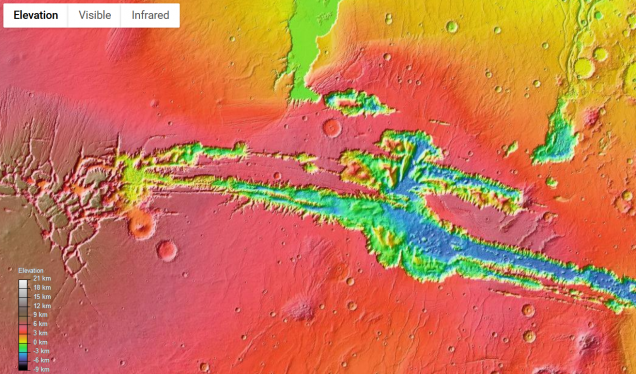 Just to show you how little has eroded from an elevation map of the Valles Marineris with red being 3km above 'sea level; and blue being 3km below.
Just to show you how little has eroded from an elevation map of the Valles Marineris with red being 3km above 'sea level; and blue being 3km below.This means that the pictures we get from Mars are something we know has been there for a while, if we ignore the dust. This is pretty handy for terrain building because it means that structures won’t erode too quickly and a ‘settlement’ of several hundred years ago would still sort of look alright albeit covered in dust and probably not have any moving parts free to do so anymore. So pictures like below pretty much cover all we need for a general surface. Rememeber though that I said things don’t erode very quickly, this goes for water patterns too! On Earth we sometimes find old water beds with all the little dunes like are on the beach, but we only find these ancient river beds in good nick if they were covered quickly and saved from erosion. On place like Mars they may survive for much longer! Important thought if you’re planning a Mars-like planet!
From a geology point of view, being able to look at things like this is great as it shows us how things can happen on Earth thanks to science not really giving a damn which planet you’re on. The Laws of Physics work if you’re on Earth, Mars, Pluto, or anywhere else. This also doesn’t even begin to cover the volcanoes on Mars! Olympus Mons is the largest Shield Volcano (think Hawaii) in the Solar System, for example! But for all our volcano reference material there’s plenty we can see on our own planet. Maybe one day I can get nice and close to one and do a post for volcanoes!
So a really useful take away from this is dust. You want to do Mars? You need dust. Everywhere. Even in the toaster. It’s the reason most rovers have a lifespan; they can only run on solar if the panels don’t get covered in dust! Also remember that your tables for a ‘Martian’ style planet shouldn’t be flat. It’s not a moonscape of craters (though Mars does have a massive crater in it), it’s a dusty, rock landscape with no more water left on the surface. And if anyone is interested in it, Astrogeology is a fascinating subject to read about! Venus is particularly interesting, but I won’t go into that here!
I promise once I can get out and about again the next posts will be something on Earth. Maybe the Canadian Shield? We’ll have to see.




































![TerrainFest 2024! Build Terrain With OnTableTop & Win A £300 Prize [Extended!]](https://images.beastsofwar.com/2024/10/TerrainFEST-2024-Social-Media-Post-Square-225-127.jpg)




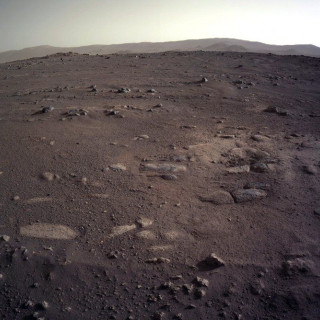
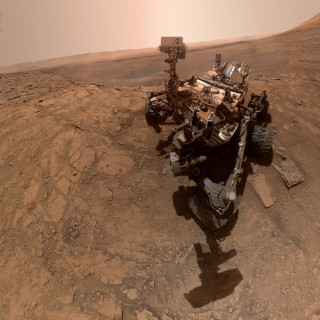
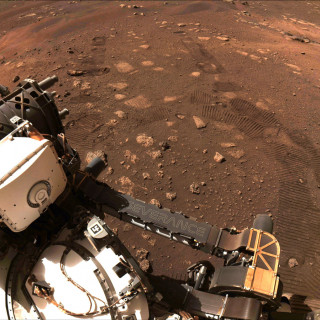
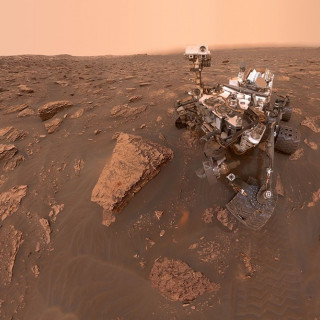
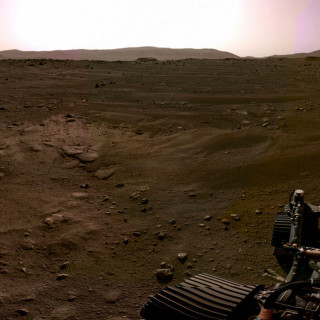










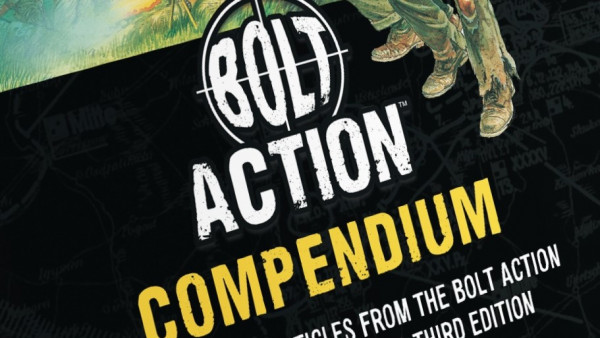

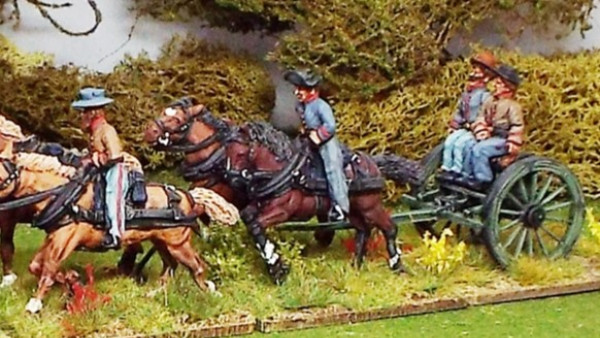




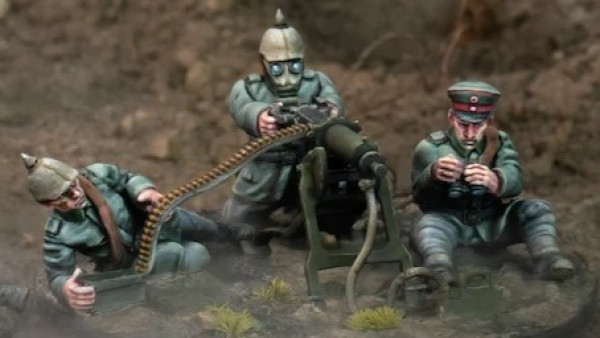
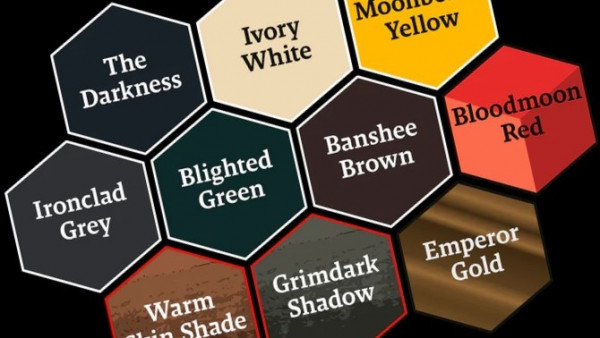














Leave a Reply